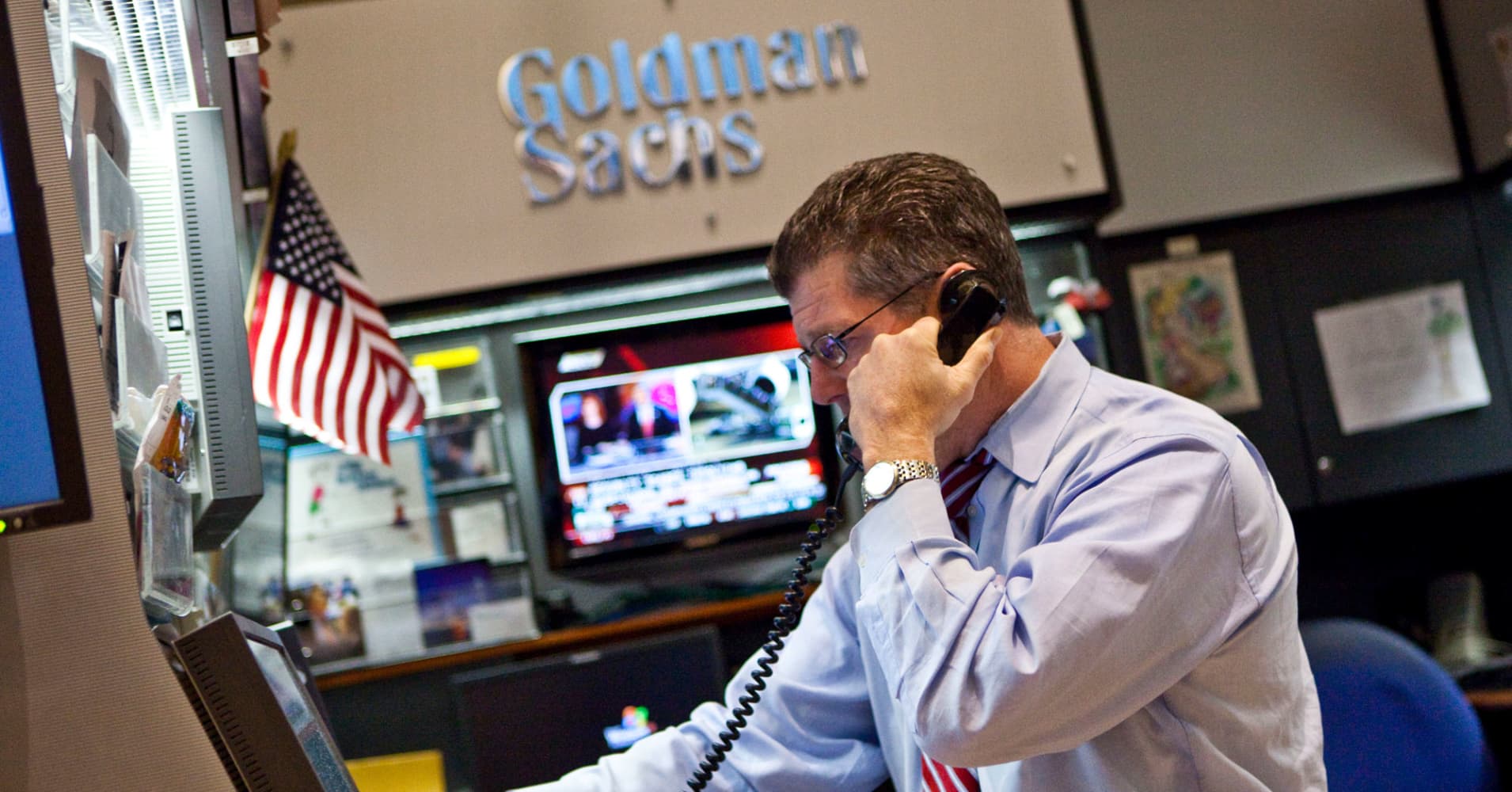
Rising interest rates and a booming economy should, at least in theory, be good for bank stocks. But shares of most of the biggest U.S. lenders are trading in correction territory, some hitting fresh lows for the last year.
Investors who are puzzled by this will look for answers on Friday, when three of the big banks report third-quarter earnings. It is traditionally a weak quarter for banks, but rising rates and worries over trade tariffs are adding pressure to expectations.
As of mid-day on Thursday, the day after a more than 800 point tumble for the Dow Jones Industrial Average, bank stocks were in the red. Morgan Stanley is nearly 26 percent below its 52-week high, and Goldman Sachs is 22 percent lower, both hitting new 52-week lows on concern over weak trading results and falling fees for giving merger advice.
Shares of Wells Fargo are down 21 percent from their recent high, also near a 52-week low. Citigroup shares are down 13.5 percent and J. P. Morgan Chase's are down 7.6 percent.
Wells Fargo, Citi and J.P. Morgan report results on Friday. Morgan Stanley and Goldman are out next week.
A stock is said to be in correction territory when it falls 10 percent or more and a bear market when it drops more than 20 percent.
Analysts said they will be listening closely to what executives say during earnings conference calls. J. P. Morgan's CEO Jamie Dimon reports earnings first on Friday. "If Jamie and (CFO) Marianne Lake come out tomorrow and say, we're cutting our loan-growth expectations because trade wars are starting to weigh on CEO confidence, and by the way M&A is falling off a cliff too, that would spook investors," said Brian Foran, an analyst at Autonomous Research.
The KBW Bank Index, which tracks many regional lenders, is down 3.5 percent for the year and more than 6 percent in the last month. Analysts will be looking to hear what banks say about loan growth, deposit costs and net interest margins, Foran said.
The Federal Reserve has raised its benchmark interest rate three times this year and is expected to hike once more in December as it moves rates back to more normal levels after a decade historic lows.
This is a double-edged sword for banks because while they can make more money from lending when rates move up, higher rates also mean banks have to pay more on deposits and they tend to put a damper on loan demand.
This all weighs on the bank sector, according to Jeffrey Gundlach of ValueLine.
"If the rate is higher there's no surprise that we see declines in home builder confidence and also the University of Michigan survey that says is this a good time to buy a house," Gundlach said on CNBC on Thursday. "Banks are doing terribly because the loan volume is likely to shrink as we see interest rates going higher because it's difficult for people to afford higher rates. "
An additional tricky factor is that shorter-term rates are moving closer to longer-term rates, narrowing banks' profit margin off lending. This is particularly a problem for smaller regional banks that depend more on lending and less on fee-generating activities like asset management and corporate advisory.
"There's more competition around deposits and the realization that rising rates aren't going to be good for banks forever," Foran said. "Eventually, it will become neutral and then a negative."
via IFTTT
No comments:
Post a Comment